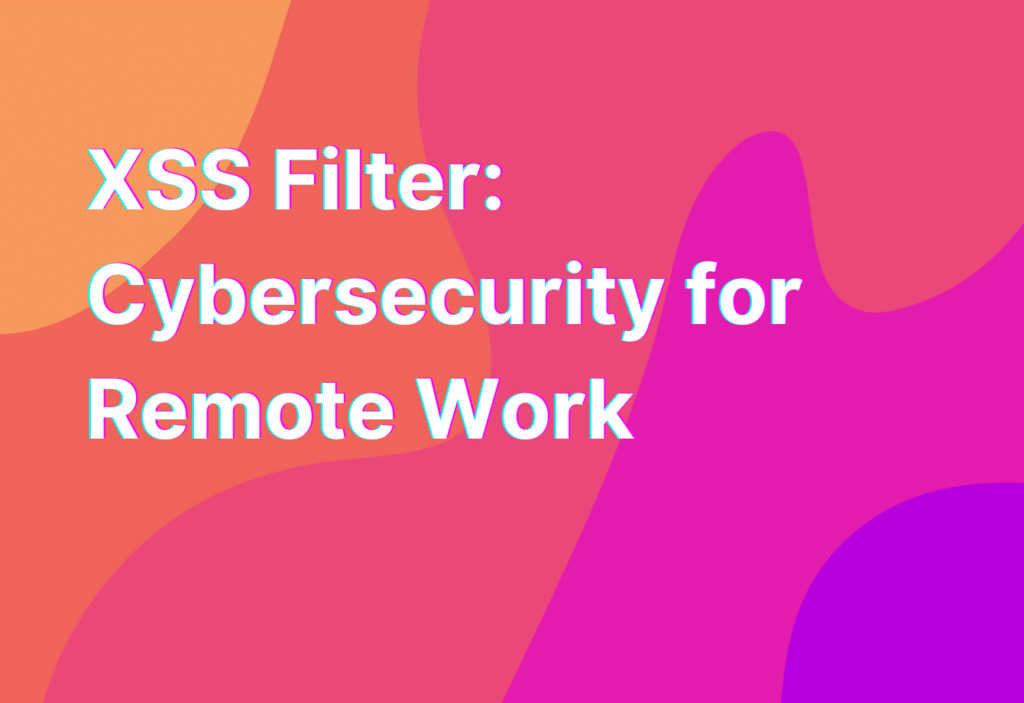XSS Filter: Cybersecurity for Remote Work
Hey there, remote work warriors! It’s Ashley here, your friendly remote work advocate with another dose of helpful information. Today, we’re diving into the world of cybersecurity and exploring the importance of XSS filters for remote work. So grab your favorite cup of coffee and let’s get started!
What is XSS Filter?
XSS, short for Cross-Site Scripting, is a type of security vulnerability that allows attackers to inject malicious scripts into web pages viewed by users. These scripts can then be executed by the victim’s browser, leading to potential data theft, session hijacking, or even complete control of the user’s account. Yikes!
That’s where XSS filters come in. An XSS filter is a security mechanism implemented in web browsers to detect and prevent XSS attacks. It works by analyzing the content of web pages and blocking any suspicious scripts from executing. Think of it as a superhero cape for your browser, protecting you from the evil intentions of cybercriminals.
Why is XSS Filter Important for Remote Work?
As remote workers, we rely heavily on web-based tools and platforms to collaborate, communicate, and get our work done. From project management tools like Trello to video conferencing platforms like Zoom, we’re constantly interacting with various websites and applications. This increased online presence also makes us more vulnerable to cyber threats, including XSS attacks.
Imagine this: you’re working on an important project, and you receive an email from a colleague with a link to a shared document. Without an XSS filter, clicking on that seemingly innocent link could lead to a malicious script being executed on your browser, compromising your sensitive data and potentially putting your entire team at risk.
By having an XSS filter enabled, you add an extra layer of protection to your remote work setup. It acts as a gatekeeper, ensuring that any suspicious scripts are blocked before they can cause any harm. It’s like having a bouncer at the entrance of a club, only allowing in the good stuff and keeping the troublemakers out.
How to Enable XSS Filter
Enabling XSS filter is relatively easy, and it’s something every remote worker should do to enhance their cybersecurity. Here’s a step-by-step guide to help you get started:
- Open your preferred web browser (whether it’s Chrome, Firefox, or Safari).
- Navigate to the browser’s settings or preferences.
- Look for the security or privacy section.
- Find the option to enable XSS filter.
- Toggle the switch to enable the filter.
And voila! You’ve just added an extra layer of protection to your remote work arsenal. Now you can browse the web with peace of mind, knowing that your browser is equipped to handle any potential XSS attacks.
Wrapping Up
Well, folks, we’ve reached the end of our cybersecurity journey. Today, we explored the importance of XSS filters for remote work and how they can help protect us from malicious scripts and cyber attacks. Remember, enabling an XSS filter is a simple yet effective way to enhance your online security and keep your remote work environment safe.
If you want to dive deeper into the world of cybersecurity and learn about other risks and threats in remote work, be sure to check out our article on Adware Risks in Cybersecurity for Remote Work. It’s a must-read for all remote work warriors!
Stay safe, stay secure, and keep rocking that remote work life!


